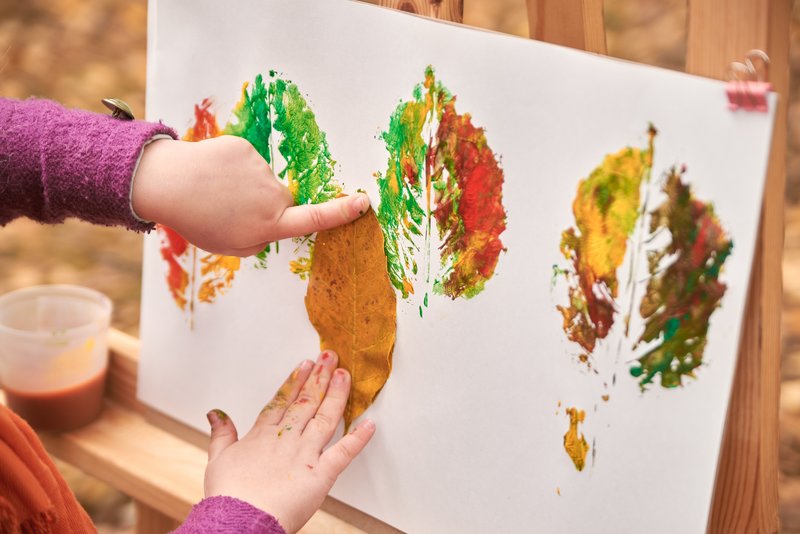
We aim to give food for thought as well as inspiring your creativity and
providing practical ideas you can’t wait to implement in your own settings!
Inspiring Awe and Wonder with Outdoor Learning
As educators, we know how valuable nature is to a child’s development, and conversely, how important it is for pupils to build up a deep appreciation for the world around them! Outdoor learning and play is an integral part of this process. While this is usually well-resourced and prioritised in Early Years settings, outdoor learning is all too often overlooked as pupils become older and progress through school. In this article, we’ll explore how to make the most of these teaching opportunities across Key Stage 1 and Key Stage 2. Whether you use these ideas to enhance forest school sessions or to enrich curricular lessons, we hope they help to light the spark and ignite children’s curiosity!

What are the key elements of outdoor learning?
To ensure that the time you spend outdoors with your pupils is as rich as possible, it’s vital to facilitate activities which involve both the brain and the body. EYFS consultant and author, Marjorie Ouvry, has described this as learning which engages ‘the muscles and the mind’. This idea has been reiterated by Professor Jan White, who has discussed the importance of ensuring that outdoor learning does not simply replicate indoor sessions in an outdoor setting. Instead, outdoor learning should capitalise on shape and scope, encouraging large-scale activities and movements. It should also have the exploration and appreciation of nature at its heart, adapting to the real-world context of your specific setting.
How can I encourage inquisitive thinking outdoors?
While inquisitive thinking can be harnessed in any learning environment, there’s arguably no better place than the great outdoors for inspiring curiosity! According to the Oxford University Centre for Educational Assessment, inquisitive thinking has a range of key components. These include deep thinking, the use of high-quality language and discussion, asking questions, making connections between learning and everyday life, reviewing previous learning and also considering what pupils themselves would most like to learn. With all this in mind, we’ve compiled a list of activity ideas to help you create outdoor learning opportunities which really leave a lasting impact.
1. Take book-based role play outdoors! Whether you’re creating freeze frames, experimenting with hot-seating or re-enacting scenes from a text, outdoor role play is perfect for stories which are based in a woodland environment, including many traditional tales and fantasy stories. This is also a lovely way to inspire some truly magical setting descriptions.
2. As well as conducting geographical fieldwork to investigate the human and physical features of your local area, you could also create a large-scale, outdoor map of this space using natural materials. This is a great opportunity to encourage children to think symbolically and work collaboratively. Take a look at Anthony Barlow’s Key Stage 1 WOW lesson, ‘What does Sky the spider see from above?’, for more on the construction of ‘messy maps’.
3. Hunt for different shapes, lines and angles within your outdoor environment. When you look closely and carefully, natural materials like leaves, sticks and stones provide a plethora of intricate geometric features for pupils to study. This could, for example, relate to recognising 2D shapes in Year 1 or perhaps identifying and comparing different angles in Year 4.
4. To really bring your History lessons to life, re-enact a battle outdoors! This will work particularly well for battles which took place within the British Isles, such as the Battle of Stamford Bridge, creating a truly immersive and authentic experience for Key Stage 2 pupils. For more on this topic, check out Glenn Carter’s Key Stage 2 WOW lesson, ‘The struggle for the Kingdom of England: Who held power between the Anglo-Saxons and Vikings?’.
5. Investigate the biodiversity of your local area with some bird watching. This is a fantastic way to develop the scientific skills of observing and identifying. Additionally, you could create your own bird feeder to attract an even wider array of feathered friends to your learning environment! Check out our ‘Egg box bird feeder craft’ video for even more inspiration.
6. Take algorithms out into nature! The foundations of early computing skills don’t need to be confined to a classroom. Learning how to create or follow a set of clear, precise instructions can be achieved in any outdoor area. This also gives children much more space and freedom to explore different directions and forms of movement.
7. Take some inspiration from Emily Gopaul’s Key Stage 1 WOW lesson, ‘Big art question: Can rubbish be art?’ and construct sculptures made from recycled materials. When taken outdoors, this would be a wonderful basis for a temporary art trail around your school grounds. What’s more, this activity is a perfect way to spark discussions about our own impact on the environment and the importance of ‘leaving no trace’.
References
• Marjorie Ouvry, ‘Exercising Muscles and Minds: Outdoor Play and the Early Years’ (2003)
• Jan White, ‘Playing and Learning Outdoors: The Practical Guide and Sourcebook for Excellence in Outdoor Provision and Practice with Young Children’ (2019)
• Oxford University Centre for Educational Assessment, ‘Promising Practices 3: Nurturing an Inquisitive Mind’ (2022)